My introduction to the world of teas came during a trip to Hong Kong. Sitting in a restaurant high above Victoria Harbour, I sipped cup after cup of steaming oolong, amazed at the exalted aromas of melon, spice, and exotic flowers.
Since then, I’ve continued to travel and enjoy teas around the globe — spiced chai in India, hearty black teas in Australia, and delicate green varieties in Vietnam and Japan.
I have seen firsthand that tea really is the world’s favorite beverage. Today, 2 billion people drink two or more cups daily, and the tea market is expected to grow by more than 6 percent annually over the next several years.
What’s behind tea’s growing popularity?
One factor may be the mounting evidence that its abundant antioxidants — particularly a polyphenol called EGCG (epigallocatechin gallate) — can help lower blood pressure, reduce inflammation, and boost the immune system. But that’s hardly a complete list.
A 2018 Korean study, for example, found that frequent green-tea drinkers were 21 percent less likely to suffer from depression. And a 2021 Japanese study looked at survivors of stroke and heart attack and found that frequent tea drinkers had about a 60 percent lower risk of death from all causes.
While it might seem that we are just starting to understand tea’s many benefits, historians would likely disagree. For millennia, Chinese scholars have been extolling the medicinal uses of the tea plant, Camellia sinensis. At the same time, they were celebrating what it can do for our spirit — namely, restore a sense of well-being with a ritual that, regardless of where we travel, is always close at hand.
Tips for Tea Preparation
Water: One of the most important points is also one of the most fundamental: Pay attention to water quality. Select the best-tasting water possible, and heat only cold, fresh water.
Temperature: Water temperature is another key factor, especially when preparing green and white teas, which can turn bitter quickly when steeped in water that is too hot. For those varieties, heat water to a temperature between 160 and 180 degrees F. Black tea needs boiling water to bring out the robust flavor of the leaves.
Time: The taste and aroma of your tea — and the amounts of antioxidants and caffeine it contains — are determined by how long the leaves remain in the water. Green and white teas should be steeped for three minutes or less. Black tea usually needs three to five minutes, but shorter infusion times may produce a milder, less caffeinated cup. Multiple infusions will bring out different flavor profiles.
Equipment: When preparing whole-leaf teas, infuse with a device (such as a pot with integral screen, or a large tea filter or ball) that provides space for the leaves to fully unfurl.
Bold Black Breakfast Tea
Full-bodied black teas from India and China can make a great swap for a morning cup of coffee.
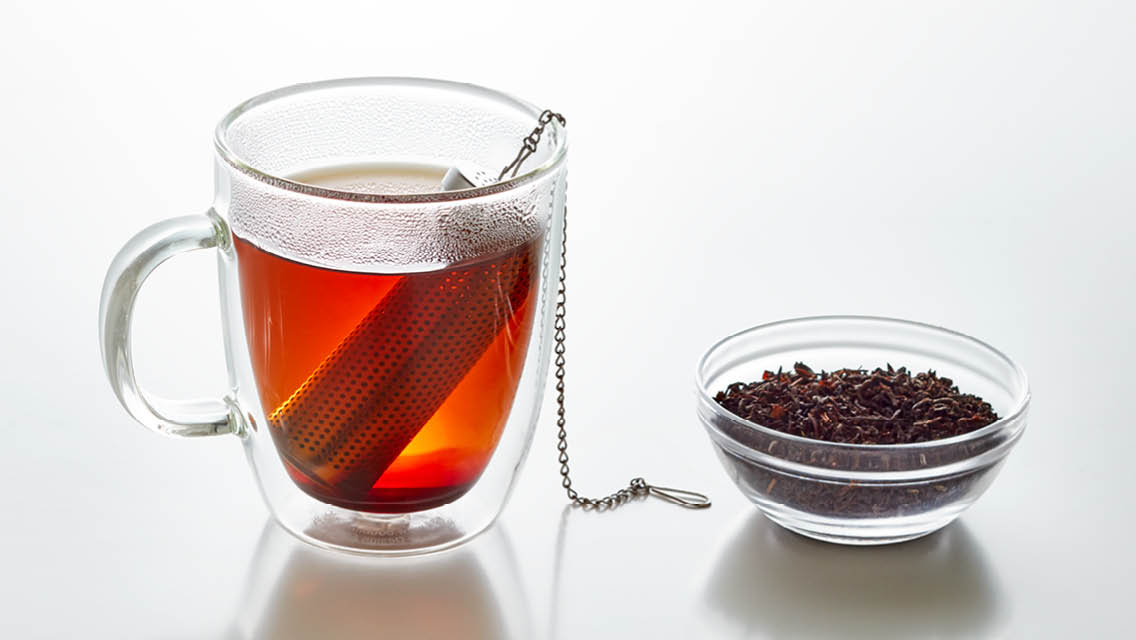
Makes one serving
Ingredients
- 8 oz. water
- 1 heaping tsp. Assam tea (options: a robust Chinese black tea, such as Keemun, or an Irish breakfast tea, which is typically based on Assam)
- 1 tbs. milk of choice (optional)
- 1 tsp. honey or preferred sweetener (optional)
Directions
- Heat water to a full boil and load loose tea into a tea ball or tea filter.
- Pour water into a mug, add tea, and steep for three to five minutes.
- Remove tea and add milk and sweetener, if desired. Serve.
Chai With Toasted Spices
In Hindi, this recipe is a “masala chai,” meaning spiced tea. It’s popular throughout the Indian subcontinent and South Asia, where there are many different regional variations.
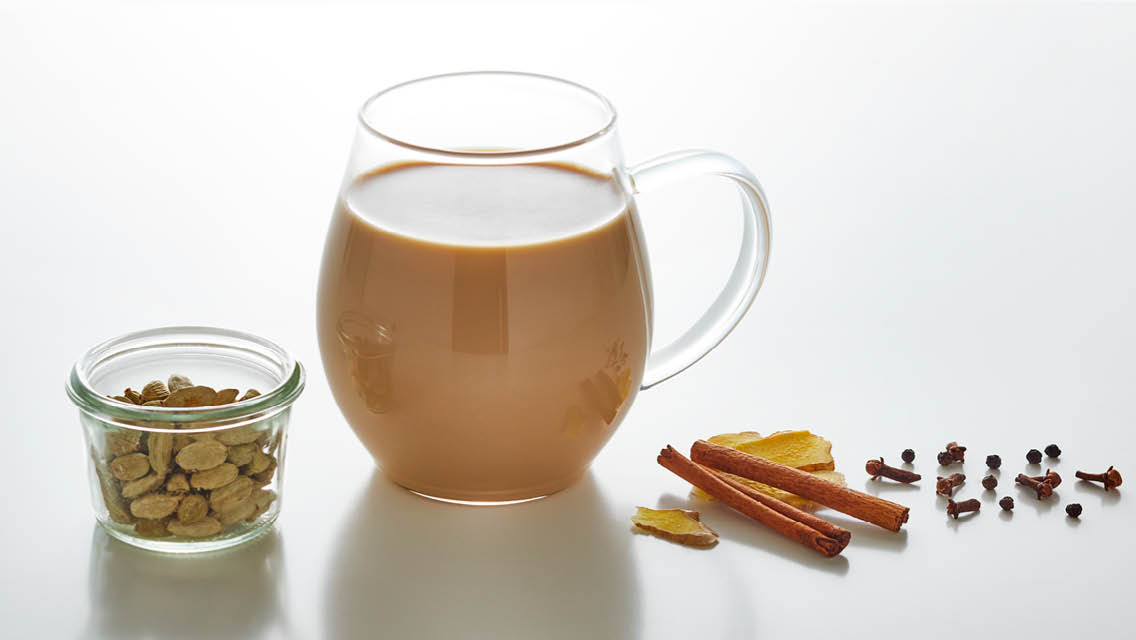
Makes two servings
Ingredients
- 5 green cardamom pods, lightly cracked
- 2-inch piece of cinnamon, broken
- 5 whole cloves
- 6 whole black peppercorns
- 2 or 3 slices of fresh ginger, about 1 1/2 inches in length, skin removed
- 16 oz. water
- 3 1/2 tsp. Assam tea (options: Irish breakfast tea or another quality black-tea “breakfast blend”)
- 2 tbs. agave nectar or preferred sweetener (optional)
- 1/2 cup unsweetened almond milk or milk of choice
Directions
- Place the cardamom pods, cinnamon, cloves, and peppercorns in a dry skillet over medium heat, and lightly toast until fragrant, about three minutes, stirring occasionally.
- Place toasted spices, ginger, and water in a small saucepan. Bring to a boil and then remove from heat. Cover and allow to rest for eight minutes.
- Return to heat and bring just to a simmer, then remove from heat. Add tea, sweetener (if desired), and milk; stir once and allow to sit, uncovered, for three and a half minutes.
- Stir once more and strain tea into mugs or small pitcher. Serve.
Dragon Well Chinese Green Tea
Leaves of longjing (or Dragon Well), one of the finest and most famous Chinese green teas, are relatively large, with a flattened, spear-shaped appearance and a slightly glossy sheen.
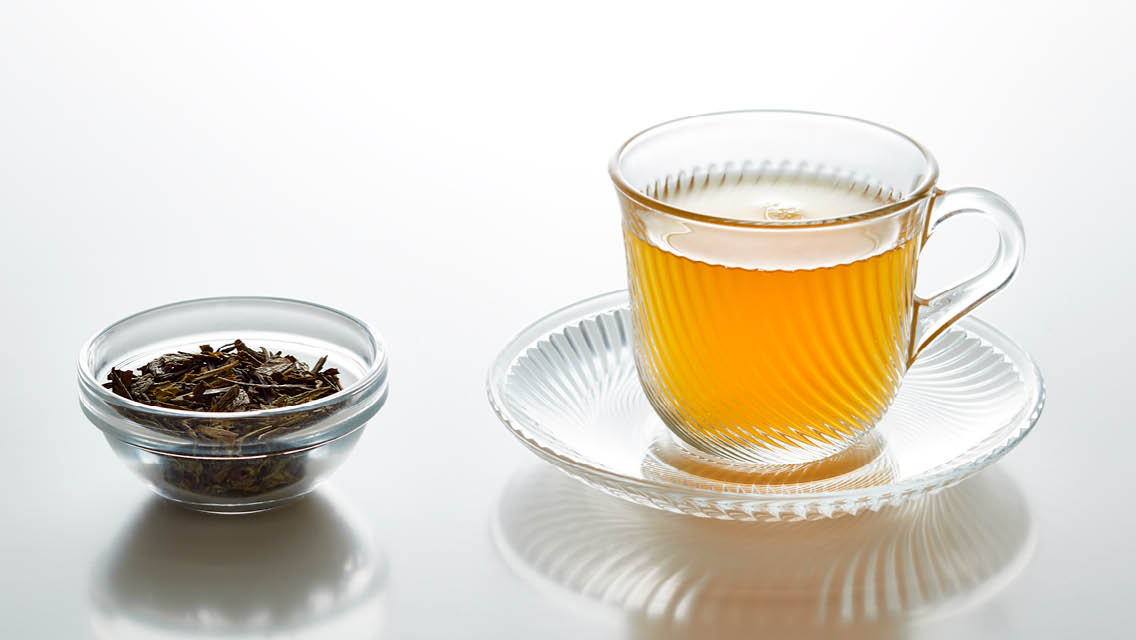
Makes one serving
Ingredients
- 8 oz. water
- 1 tsp. longjing tea (a.k.a. Dragon Well)
Directions
- Heat water to a full boil, then allow to cool to 180 degrees F.
- Load tea leaves into a tea ball or filter.
- Pour water into a mug or a cup, then add tea and steep for three minutes.
- Remove tea and serve.
Kashmiri-Style Tea With Saffron and Almonds
Kashmiri-style tea brings together the intoxicating aroma and flavors of spiced tea with the freshness of a green tea.
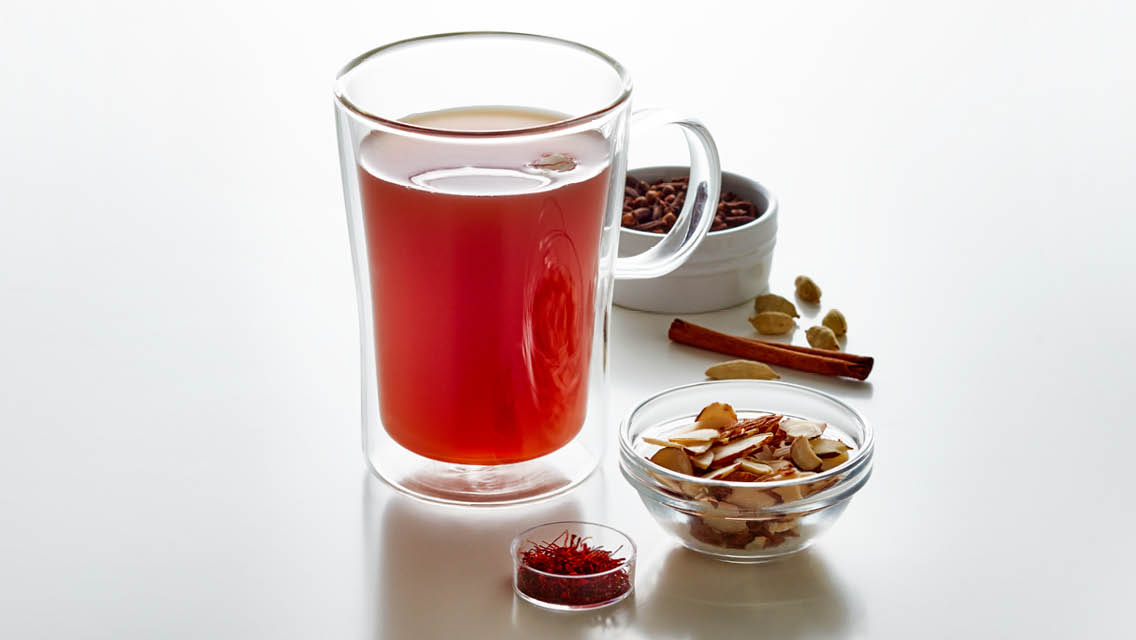
Makes two servings
Ingredients
- 5 green cardamom pods, lightly cracked
- 1-inch piece of cinnamon, broken
- 2 whole cloves
- 16 oz. water
- 2 tbs. sliced almonds
- 2 tsp. gunpowder tea or other Chinese green tea
- 1 tbs. agave nectar or preferred sweetener (optional)
- 2 strands saffron
Directions
- Toast the cardamom, cinnamon, and cloves in a dry skillet over medium heat until fragrant, about three minutes, stirring occasionally.
- Place the spices, water, and almonds in a small saucepan and bring to a boil over medium heat.
- Remove from heat and cover, then let rest for five minutes.
- Remove cover and allow mixture to cool to 180 degrees F, about three to four more minutes.
- Add tea leaves and sweetener, if desired; stir once, and cover for an additional three minutes.
- Stir one more time and strain into cups for serving. Use one saffron thread and a few slices of almond from the pot to garnish each cup.
Afternoon Darjeeling Iced Tea
Darjeeling tea is sold in two main varieties: first flush and second flush. For iced tea, the somewhat more assertive notes of second-flush teas are ideal.
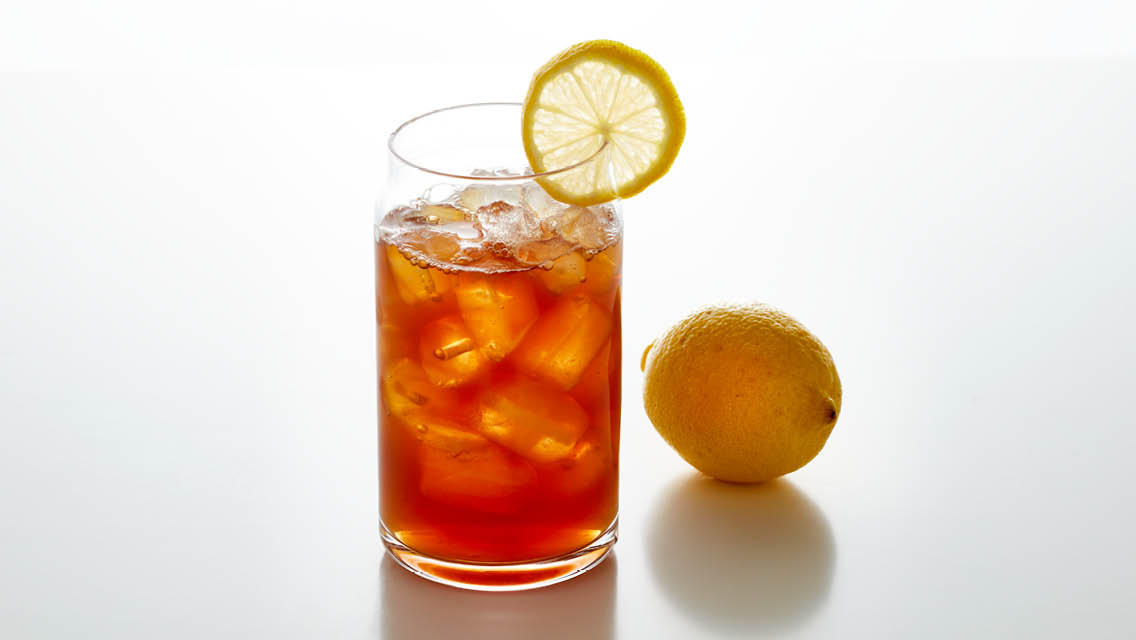
Makes one serving
Ingredients
- 8 oz. water
- 1 1/2 tbs. agave nectar or preferred liquid sweetener (optional)
- 3 1/2 tsp. Darjeeling tea (option: a quality Darjeeling blend)
- Ice
Directions
- Heat water to a full boil, then pour into a small pitcher.
- Add liquid sweetener, if desired, and stir to dissolve. Place loose tea in pitcher and steep for four minutes.
- Fill a large jar with ice, then strain hot tea over ice and stir quickly to chill.
- Pour chilled tea into glasses with more ice and serve.
Tea Cocktails
Lapsang Souchong–Infused Margarita

Makes one serving
Ingredients
- 1 tsp. flaky sea salt or kosher salt (optional)
- 1/4 tsp. sumac (optional)
- 1/8 tsp. smoked paprika (optional)
- 1 lime wedge
- 1 1/2 oz. lapsang souchong–infused tequila (see below)
- 1 oz. fresh lime juice
- 1/2 oz. Cointreau (options: Grand Marnier or triple sec)
- 1/2 oz. maple syrup
Directions
- If desired, mix salt with sumac and smoked paprika, and place mixture in a shallow saucer. Run a lime wedge around the rim of the glass, and dip the rim into the saucer to coat thinly with the salt mixture.
- Place remaining ingredients into a shaker with plenty of ice. Shake for about 12 seconds and strain into rocks glass with ice. Serve.
Lapsang Souchong–Infused Tequila
Ingredients
- 1 tsp. lapsang souchong tea (or 1 teabag of lapsang souchong)
- 1/2 cup reposado tequila
Directions
- Put tea into a tea filter. Pour tequila into a mug, add tea, and cover.
- Steep for 20 minutes, then remove the tea.
Green Tea Manhattan
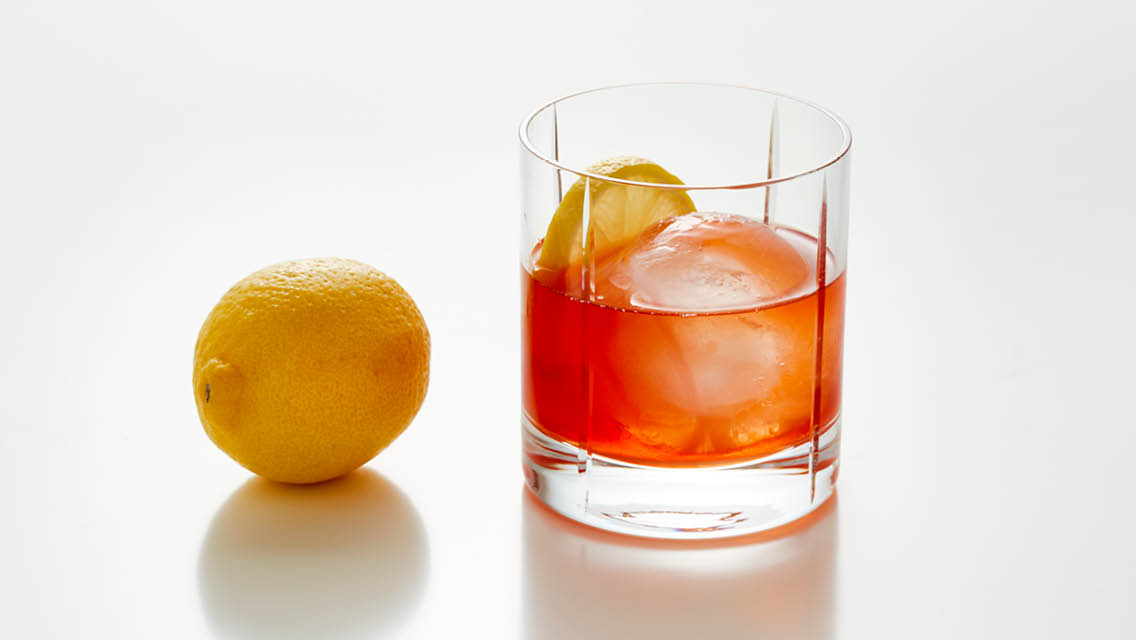
Makes one serving
Ingredients
- 1 lemon slice
- 2 oz. green tea–infused Irish whiskey (see below)
- 1/4 oz. honey syrup (see below)
- 1/4 oz. Campari
- 1 dash angostura bitters
- Ice
- Lemon twist, for garnish
Directions
- Squeeze lemon juice into mixing glass and leave the slice in the glass. Add remaining ingredients and stir to chill.
- Strain into a rocks glass with one large ice cube.
- Garnish with a lemon twist and serve.
Green Tea–Infused Irish Whiskey
Ingredients
- 1 tsp. Chinese green tea (ideally lung ching or gunpowder style tea)
- 1/2 cup Irish whiskey
Directions
- Put tea into a tea filter. Pour whiskey into a small mug, add tea, and cover. Steep for 25 minutes, then remove tea.
Honey Syrup
Ingredients
- 8 oz. water
- 1/4 cup honey (ideally orange-blossom honey)
Directions
- Heat water to a full boil. In a small bowl, mix the honey with the hot water, stirring to dissolve.
Global Tea Regions
Tea originated in China, and that country remains one of the world’s top producers, along with India and Sri Lanka. But cultivation has spread to locations as varied as Mauritius, the island nation located in the Indian Ocean; Colombia, which only began producing in the 1950s; and even the United States, notably in Hawaii and South Carolina.
Kenya has become a top tea exporter, to the tune of more than 400,000 tons per year. The excellent growing conditions along the equator allow tea gardens there to be cultivated and harvested nearly year-round — though the region is highly vulnerable to climate change, which is likely to lead to reduced yields in coming years. Meanwhile, a new emphasis on specialty teas grown in the highlands of East Africa’s Great Rift Valley is under way.
This article originally appeared as “A World of Teas” in the April 2022 issue of Experience Life.
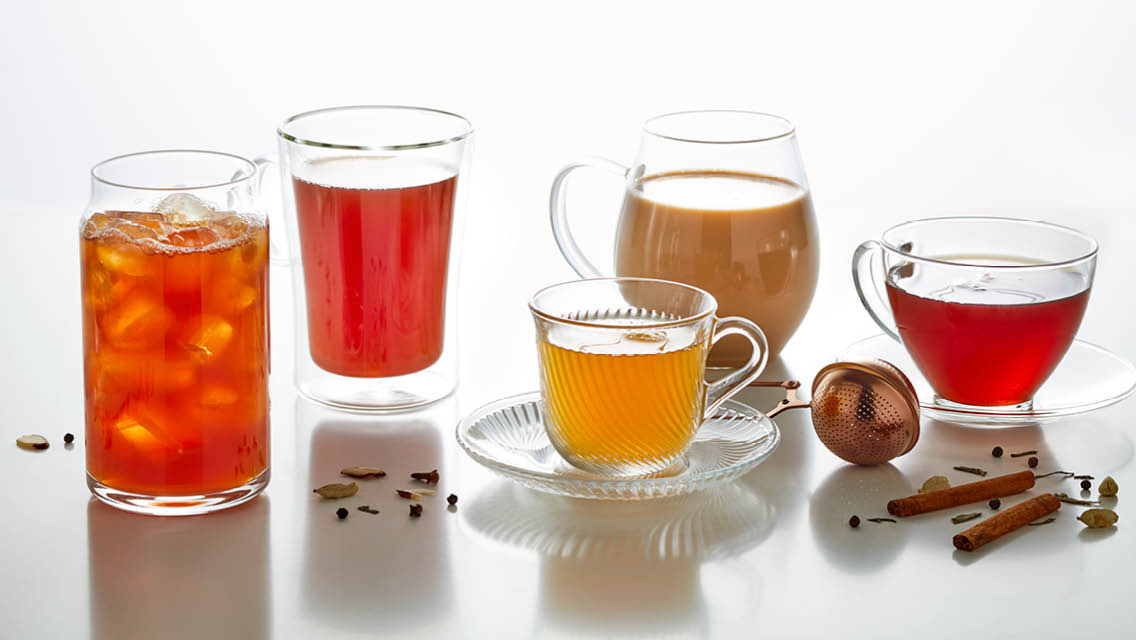

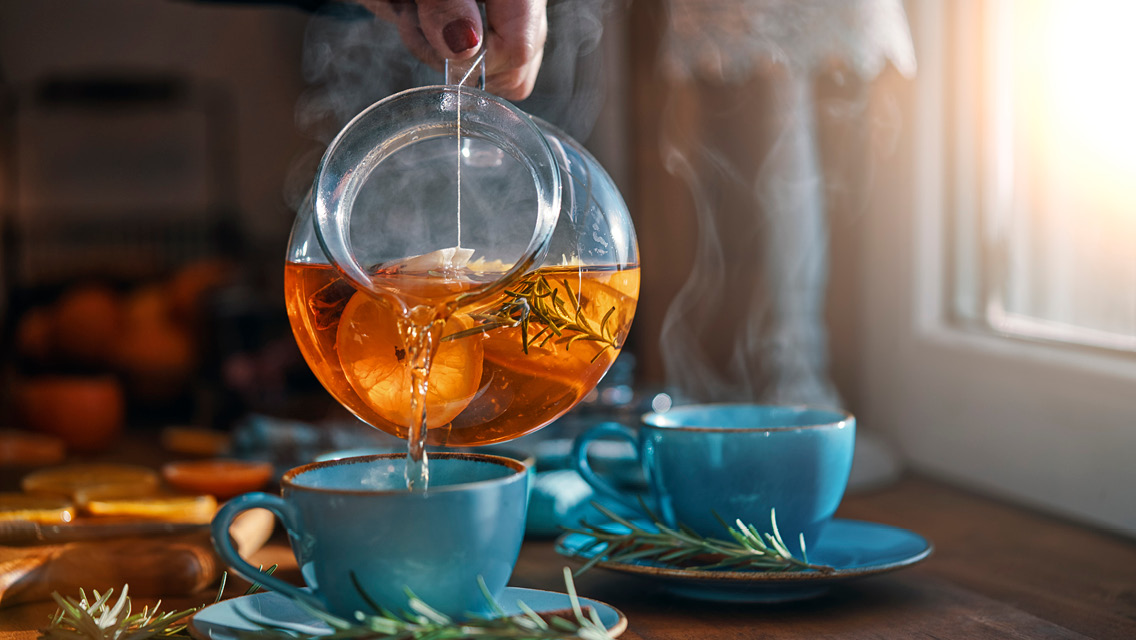

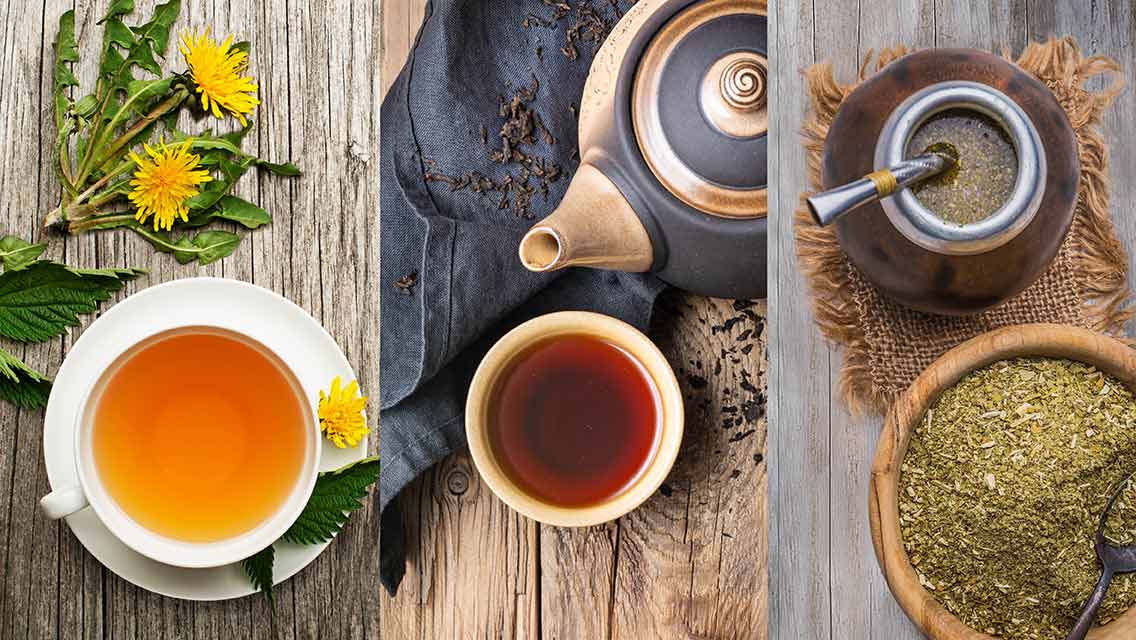
This Post Has One Comment
Tea can be incredibly healthful for people, but it’s important to know how to get the most out of the different types available. This is a solid resource to help people do exactly that.